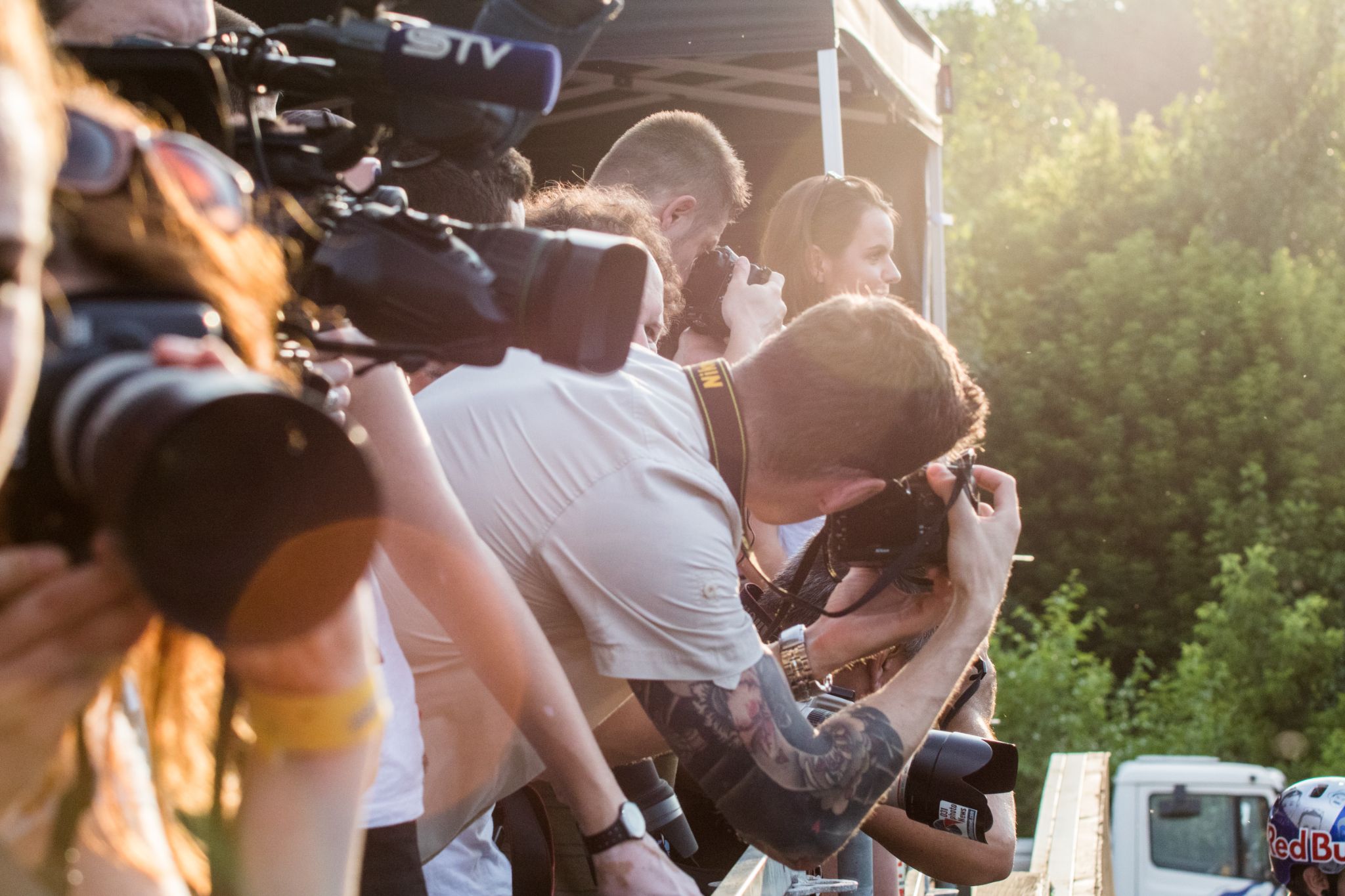Congratulations! You have a big announcement to make. No matter what the newsworthy information is, you need a quality press release to convince journalists to read and publish.
There is a lot involved in a great press release. You need to know the basic format and how to distribute and promote a press release that will get published.
Before you write your press release, you need a strategy. You can learn more about how to get your press release planned, opened, read, and shared in How to Write & Promote a Press Release that Gets Picked Up. Below we will dissect the sections of a press release and the best way to maximize them.
Are you Ready to Write?

Before you write, you should have your timeline, defined your purpose, and researched & selected the publications you want to target. You must clearly define the emotional reaction you are looking for from the readers.
The easier you make it for the journalist, the more likely it is that your press release will be published. There is a standard format that helps journalists find the information they need.
Depending on where your logo is on your letterhead, the top portion of your press release may look slightly different from others, but it should include the following information:
- Logo
- Company name
- Contact person’s name and title
- Contact person’s email and phone number
- URL directing to the company website
Release Information
Before your headline, state when the press release can be made public; use "For Immediate Release" if you have the rest of your strategy ready to go.
If the announcement cannot be made public until a specific date, use "Under Embargo" and add the date they can release the news. (Under Embargo – do not publish until [date]). There is always the possibility that it will get leaked early, so be careful!
Headline
The headline is the most crucial part of your press release because if it doesn't hook the journalist, they won't read past it. It is a promise of what the release will tell the reader. You need to use words that evoke a positive emotional response, create curiosity, and express how your news is relevant to the reader.
The headline text should be bold, around 30-45 characters, and include at least one keyword related to your niche for better search results. Don't overdo it or use cliches like, "You won't believe this!"
Sub-headline
The sub-headline supports the headline with more specific details. It summarizes the news. As such, it is best to write this after you have written the rest of your release. After you write the release, write the sub-headline to capture the essence of your announcement.
Your sub-headline text should be in italics, around 15-25 words, include keywords, and continue to build interest and context to engage readers.
Dateline
Start your first paragraph with a dateline that includes the city, state, and date, followed by a colon (New York, NY, August 5, 2021:).
Body
The body of your press release should follow the pyramid method of writing. The body should be 2-5 short paragraphs with supporting details.
1stParagraph
Frontload the first paragraph with all the most essential information (who, what, where, when, why). Be concise. Make sure this section answers "What's in it for me?" for the reader. By the time the journalist finishes the first paragraph, they should understand your announcement and all the relevant facts. Keep it around 50 words, but make sure it covers all of the important information.
2ndParagraph
You can add additional information here. You still want to keep it clear, concise, and no more than 4-5 sentences.
3rdParagraph: Quote
A direct statement from someone who will lend authority to the topic increases your chances of getting your announcement published. This isn't as easy as just asking someone for a quote. You need a plan that ensures the section will elevate your message and is from someone the readers will trust.
Decide who involved will be most relatable to readers and has the authority to comment publicly. When you ask them for a quote, explain that it will be publicly shared as part of a press release on the topic XYZ. Let them know what kind of quote would best support the announcement.
You may want to draft a few examples to share with them. Many people will approve of using one as their quote. This saves them time and helps ensure that the selection matches the voice, brand, and reason for the release.
If the announcement involves multiple groups, you can ask them for quotes as well. You do not have to print all of them, and it will give you various viewpoints. Always have the quote from the representative of your organization first. If you want to add additional quotes, place them above the boilerplate.
4thParagraph
Include information here about how they can register, sign up, download something, and link to a place with more specifics.
You should add an invite to reach out for more information.
Photos

If you can include photos, do it! They are attention-grabbing and evoke an emotional response. Ensure you have permission from the people pictured, include a short description of what is happening in the photo, and the full names (spelled correctly) of everyone in the picture. There are numerous programs out there you can also use to spruce the image if you need to.
Boilerplate
This is where you talk about yourself. Include information about who you are, what you do or sell, your mission statement, how you are fulfilling it, helping your clients, and any awards. Share what makes you unique and worth paying attention to. Don't forget to include how to contact you and where to find your website and social media channels.
Include keywords for your industry to increase search results. The boilerplate should be about 100 words long.
If there are multiple groups involved, you can add a boilerplate for them. An example would be winning an award. Share a boilerplate for you (always first), the people giving you the award, and links to any online information that pertains to the group.
The End
You don't want the reporter to miss anything. The very last thing on your press release should be something to let the reporter know there is nothing more. In the journalists' world, they recognize the end when they see three pound signs (###). Don't expect them to read anything after that.
Edit
- Make sure to go back and write your sub-heading
- Check all spelling, grammar, and word choices
- Have someone who knows nothing about the announcement read it to see if it clearly meets all of your goals
- Confirm the spelling of names
It can be tempting to find a free press release template and plug in some information. Journalists get those all the time. While the format is important, the press release's success depends on whether it hooks the journalists, is meaningful to their readers and provides all the information the journalist needs.
Spread Your News with Missinglettr
Missinglettr makes it easy to distribute all your latest articles further with an advanced suite of social media management tools. Drip campaigns make developing promotional posts simpler than ever, while calendar and analytics tools give you more visibility into your efforts and the results you’ve driven. Try Missinglettr for free today.

